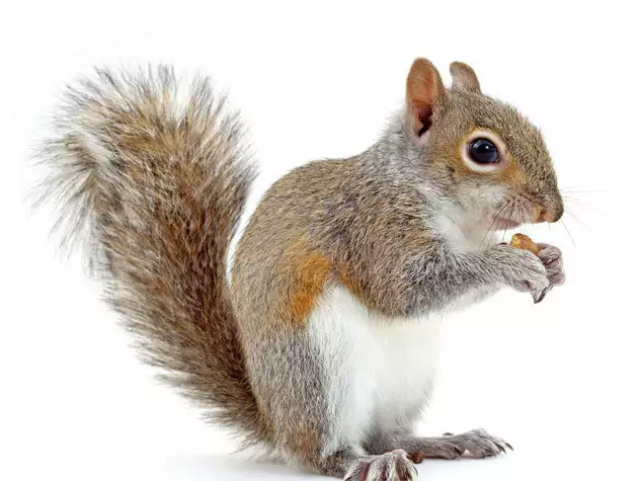“YOU WILL GET THE BEST, MOST THOROUGH, PROFESSIONAL SERVICE YOU HAVE EVER SEEN…I GUARANTEE IT.” – PAUL BAUMEISTER, OPERATOR
 Squirrel Control
Squirrel Control
There are four species of tree squirrels in California, excluding the small nocturnal flying squirrel, which is not considered a pest. Of the four tree squirrels, the eastern fox squirrel, sometimes called the red fox squirrel, is by far the most serious pest to homes and gardens in urban and suburban situations. This squirrel can be differentiated from the others by its brownish red-orange fur. Tree squirrels naturally nest in tree cavities, enlarged woodpecker holes, or high in a tree in a spherical nest they construct of twigs, leaves, and shredded bark. Breeding occurs in the late winter or in the spring and, depending on the species of tree squirrel, produces one or two litters per year of three to five young. For those producing two litters, the breeding period is extended.
Management
In urban and suburban areas tree squirrels are difficult to control because of their great mobility and because many people feed and provide nest boxes for the squirrels in order to encourage their presence.
Property Damage from Squirrels
Squirrels will chew through anything. Structural wood, aluminum, electrical wires, insulation, shingles and vents are favorite targets.
Squirrels must constantly chew in order to keep their incisors from growing too long. Multiply the problem times five babies (pups), and you have a major building damage problem and fire hazard. Squirrels will build nests in attics, chimneys, vents, roofs and walls. They will use a wide variety of nesting material including insulation, vapor barrier, wood, drywall and paper.
Squirrel nests tend to be large in relation to their body size and very messy, often extending several feet along a vent pipe or in an attic. Their large dry nests and electrical wire chewing make them a major fire hazard.
Health Risks from Squirrels
Squirrels attract ticks and fleas, especially in warmer weather.
If the squirrels leave the nest for an extended period, these ticks and fleas will look for new hosts (i.e. people and pets). Although usually frightened of people, a mother squirrel can be quite aggressive if she perceives danger or is separated from her babies.
Squirrels are very swift and can move or attack quickly if threatened.

